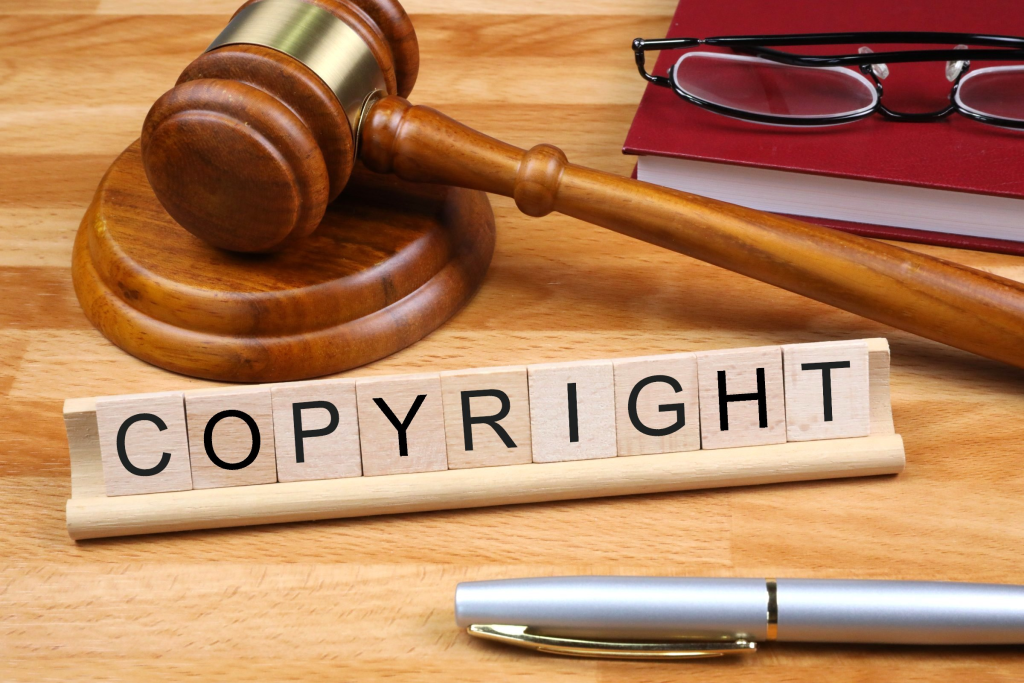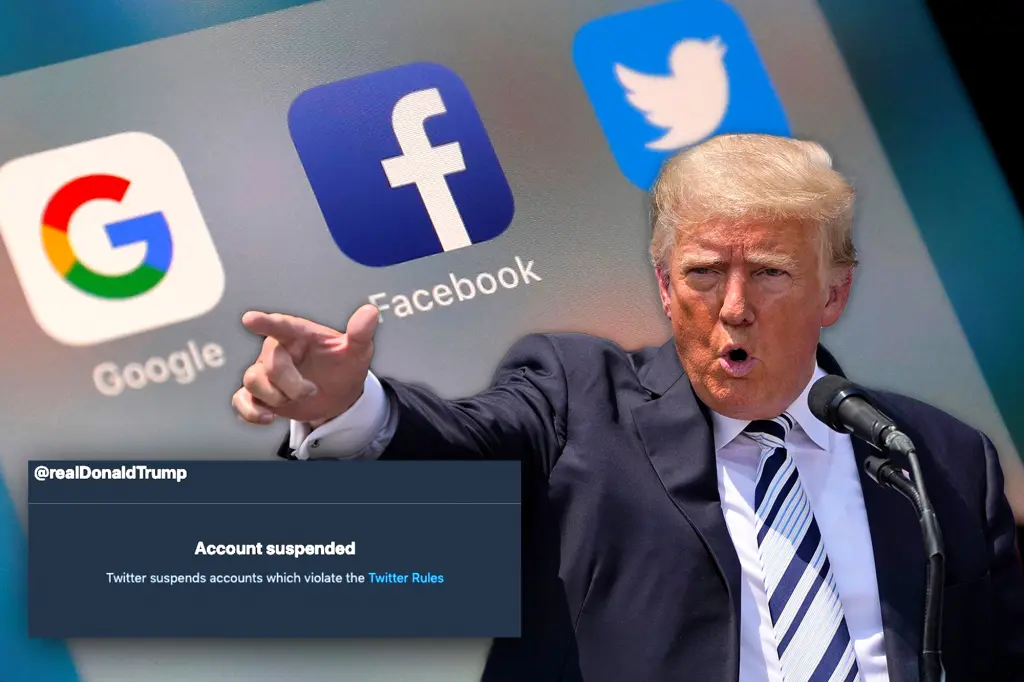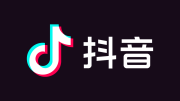
“Creative Commons Copyright Image” by Nick Youngson is licensed under CC BY-SA 3.0 Pix4free
In the digital age, the landscape of user’s intellectual property, especially copyright protection, has been transforming the ease of sharing and transferring content information (Tella et al., 2020). For example, pirated content is fueled by the minimal cost of reproducing original works, which is a major challenge to copyright holders. As a legal term, copyright covers the creator’s artistic and literary work, ranging from music, books, sculpture, programs, maps, adverts, technical drawings, and paintings. Once a niche concern, copyright protection has unprecedented value, along with global laws and regulations such as the World Intellectual Property Organization (WIPO) championing content information creators’ protection (WIPO, 2023).
However, the digital revolution has a complex web of challenges and controversies that demand more than attention to protecting and supporting creators. Users, empowered by modern technologies, have become both producers and consumers of content, blurring the lines of copyright infringement and Piracy (Rittenberg et al., 2023). This essay seeks to explore the related challenges and controversies to shed light on the conundrum of the multifaceted world of copyright protection in the digital era.
Copyright and Piracy
In the digital age, piracy is a multifarious concern stemming from the ease of content replication and user preferences for free or cheap content products. Prasad (2023) highlights that the internet has been revolutionizing content replication, leading to piracy incidences. Copying original work is virtually cost-free in this digital age and has been a challenge to full copyright protection. Users use modern and powerful tools to duplicate and distribute copyrighted materials effortlessly. Thus, copyright holders continue to face an uphill battle as they seek to safeguard their intellectual property against pirates across the webs (WIPO, 2015) The Recording Industry Association of America (RIAA) is an example of a reputable advocate for copyright protection that found itself locked in legal battles with its pioneering platforms. Dodes (2002) highlights that the RIAA sued Napster in 1999 for enabling its users to download MP3 files, an act of surging music piracy. The incidence of piracy resulted in Napster succumbing in the legal proceedings and was replaced by Roxio, an organization that has been known to encourage RIAA-approved free download services. In this example, the legal battles highlighted the struggle copyright holders face in the digital landscape.
As in the case of RIAA, which sued Napster in 1999, suing reputable and individual users remains a contentious strategy. McDonald and Roberts (1994) highlighted a number of repercussions, like the damage to a company’s image and goodwill, creating risky incidences that are not likely to go away. As a result, it has become imperative for users and content creators to be alike, and it underscores the delicate balance that copyright protectors enforce in protecting intellectual property and preserving positive relationships with its consumers.
Copyright Challenges on Online Platforms infringements
Copyright issues extend to online platform infringements as it continues to face notable challenges in addressing and preventing copyright infringements (Peukert et al., 2022). Major digital platforms, such as Google and YouTube, find it challenging to frequent copyright infringements. For instance, YouTube has been at the center of numerous copyright disputes. Content creators often find their copyrighted material, such as music or videos, uploaded without authorization by users (Patel, 2023). Infringements on platforms have led to a loss to original content creators as others generate millions of views and monetization. However, platforms like YouTube have implemented a “Content ID” system, an automated technology for identifying and managing copyrighted content on their platform (Soha & McDowell, 2016).
Moreover, Google, as a search engine and provider of services like Google Drive, encounters similar infringement, particularly in the storage and sharing of copyrighted files. Users may upload and share copyrighted materials without authorization, making Google indirectly involved in copyright disputes.
However, like YouTube, it complies with the Digital Millennium Copyright Act (DMCA), allowing copyright owners to request the removal of infringing content (Humphries, 2022). Despite these efforts, the sheer volume of user-generated content makes comprehensive enforcement a complex task. Ruse-Khan and Henning (2020) contend that online platforms bear a degree of responsibility for promoting and monetarizing user-generated content. This responsibility is to invest in strong copyright enforcement measures to protect intellectual property rights.
Copyright Value and the Digital Age
Despite challenges, the industry is gradually being valued and integrated into the digital infrastructure as different initiative around countering copyright piracy and online infringement continues. Suzor (2019) highlights that there is success in the copyright industry, particularly in integrating copyright protection from the internet infrastructure and the creation of a parallel system that addresses online infringement effectively. Integration is associated with countering the prevalence of pirated content based on digital ethics across the web (Indriasari & Karman, 2023). For instance, streaming services on platforms like Spotify, iTunes, Hulu, Amazon, Stream, and Netflix have established legitimate means for accessing original films and music, among other creator’s content. It comprises vast libraries of copyrighted content, and it has been possible to reduce appeal associated with piracy and infringement incidences, an approach of increasing value from content consumption in the digital era. Besides, internet platforms continue to adopt “notice and takedown,” The mechanism is designed to address copyright infringement in a timely manner. It includes social media platforms that allow the right content creators to report unauthorized use of their copyrighted content so that it can be restricted and removed. As a result, automated enforcement tools are also deployed in online platforms to effectively identify and deal with copyright infringement, thereby promoting the protection of intellectual property rights and supporting the growth of the copyright industry (Ruse-Khan & Henning, 2020).
Suzor (2019) claims that the growth of the industry’s value copyright protection may encroach upon user freedoms and potentially lead to overzealous censorship. It is argued that control of online platforms, such as the “Great Firewall of China,” is associated with bureaucracy in blocking content despite the need to maintain a fair and equitable digital environment (Manwaring, 2019). As a result, balancing between copyright enforcement requirements and regulations in response to user-generated content is essential. It may ensure legitimate uses of copyrighted materials to unjustly restriction.
The Ongoing Copyright Debate
There has been contentious debate, primarily revolving around conflicts between traditional media and platform companies within the digital landscape. For example, Andric (2023) highlights that traditional media creators heavily rely on cultivating a loyal user base and making substantial investments in content creation. In contrast, industry titan’s online platform like Facebook and Google often prioritizes the distribution of content rather than content creation. This fundamental divergence in approach has sparked prolonged disagreements concerning the roles and regulations governing the digital ecosystem.
Central to these disputes is the question of who should shoulder the responsibility for safeguarding intellectual property rights in the online realm. (Al-Quran (2022) argues that traditional media companies invest substantial resources in producing high-quality content, such as news articles, films, and music, assuming that platforms benefit from disseminating this content and should bear a greater share of the responsibility in curbing copyright infringement. In the digital landscape, this perspective aligns with the notion that platforms should implement more rigorous copyright enforcement measures to protect the interests of content creators.
However, Dodes (2002) and Peukert et al. (2022) critique stringent copyright enforcement measures that should be adopted cautiously against impeding technological innovation and stifling the growth of online platforms such as social media. Bureaucratic censorship could discourage the development of new digital services and tools. As a result, protecting intellectual property rights is as good as fostering a culture of innovation remains a complex challenge (Al-Quran, 2022).
Conclusion
In conclusion, copyright protection has been challenged in the digital age, creating new issues and controversies. Issues surrounding piracy and copyright infringement are in the spotlight due to the ease of copying, highlighting the need for strong intellectual property protection and support for content creators. Hidden in this change are complex issues that require our full attention. Digital copyright infringement continues as content producers and consumers share content. This suggests that the complexities of perceiving and operating between traditional media and digital platforms such as Google and YouTube, while at the same time increasing user freedom, are at the root of the debate as copyright enforcement measures and support mechanisms evolve.
The complexity of copyright protection in the digital age, particularly in the context of intellectual property protection and the promotion of digital innovation, has therefore been a challenge. In order to address this problem, copyright issues need to be resolved through negotiation, dialogue and creative solutions that promote transparency and monetize benefits for legitimate owners. This would not only foster creativity and respect for intellectual property rights but also promote equitable access to content and innovative products in the digital age.
Reference list
Al-Quran, M. W. M. (2022). Traditional media versus social media: challenges and opportunities. Technium: Romanian Journal of Applied Sciences and Technology, 4(10), 145–160. https://doi.org/10.47577/technium.v4i10.8012
Andric, M. (2023, May 26). Online Media vs. Traditional Media — Which Is Superior? Target Video. https://target-video.com/online-media-vs-traditional-media-whos-the-king/
Dodes, J. L. (2002). Beyond Napster, Beyond the United States: The Technological and International Legal Barriers to Online Copyright Enforcement. NYL Sch. L. Rev., 46, 279. https://digitalcommons.nyls.edu/cgi/viewcontent.cgi?article=1120&context=nyls_law_review
Humphries, M. (2022). Google Drive Flags Text Files Containing’ 1′ as a Copyright Infringement. PCMAG. https://www.pcmag.com/news/google-drive-flags-text-files-containing-1-as-a-copyright-infringement
Indriasari, D. T., & Karman, K. (2023). Privacy, Confidentiality, and Data Protection: Ethical Considerations in the Use of the Internet. International Journal of Islamic Education, Research and Multiculturalism (IJIERM), 5(2), 431–450. https://doi.org/10.47006/ijierm.v5i2.239
Manwaring, K. (2019). Surfing the Third Wave of Computing: Consumer Contracting With eObjects in Australia. SSRN Electronic Journal. https://doi.org/10.2139/ssrn.3890503
McDonald, G., & Roberts, C. (1994). Product Piracy: Journal of Product & Brand Management, 3(4), 55–65. https://doi.org/10.1108/10610429410073129
Patel, N. (2023, August 22). Google and YouTube are trying to have it both ways with AI and copyright. The Verge. https://www.theverge.com/2023/8/22/23841822/google-youtube-ai-copyright-umg-scraping-universal
Peukert, A., Husovec, M., Kretschmer, M., Mezei, P., & Quintais, J. P. (2022). European Copyright Society – Comment on Copyright and the Digital Services Act Proposal. IIC – International Review of Intellectual Property and Competition Law, 53(3), 358–376. https://doi.org/10.1007/s40319-022-01154-1
Prasad, A. (2023). INTELLECTUAL PROPERTY RIGHTS IN THE AGE OF CONTENT CREATION. The Law Brigade Publishers. https://thelawbrigade.com/wp-content/uploads/2023/05/Akshita-Prasad-CLRJ.pdf
Rittenberg, J., Main, K., & Ramirez, A. J. D. (2023). Copyright: What It Is And How To Register – Forbes Advisor. Www.forbes.com. https://www.forbes.com/advisor/business/what-is-copyright/
Ruse-Khan, G., & Henning. (2020, March 1). Automated Copyright Enforcement Online: From Blocking to Monetization of User-Generated Content. Papers.ssrn.com. https://papers.ssrn.com/sol3/papers.cfm?abstract_id=3565071
Soha, M., & McDowell, Z. J. (2016). Monetizing a Meme: YouTube, Content ID, and the Harlem Shake. Social Media + Society, 2(1), 205630511562380. https://doi.org/10.1177/2056305115623801
Suzor, N. P. (2019). Lawless: The Secret Rules That Govern Our Digital Lives. In Google Books. Cambridge University Press. https://osf.io/aksn9/download/?version=1&displayName=Suzor%202019%20Lawless-2018-11-19T13%3A55%3A25.098Z.pdf
Tella, A., Quadri, F., Sunday Segun Bamidele, & Ajiboye, O. O. (2020). Resource Sharing. Advances in Library and Information Science, 70–92. https://doi.org/10.4018/978-1-5225-9034-7.ch004
WIPO. (2015). Teaching Materials on Respect for Copyright Students’ Notes With the support of the Ministry of Culture, Sport and Tourism of the Republic of Korea, through FIT-ROK/Building Respect for Copyright. https://www.wipo.int/enforcement/en/pdf/respect-for-copyright-english-students.pdf
WIPO. (2023). Copyright. WIPO. https://www.wipo.int/copyright/en/




Be the first to comment on "Navigating the Copyright Conundrum in the Digital Age:challenges and Concerns"